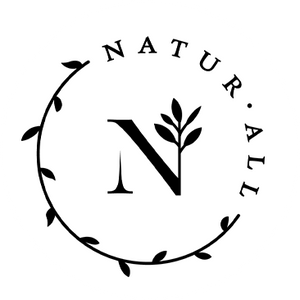
Natural hair products (products formulated for curly, kinky, or coily hair) are fairly new to the market. As these products and brands have grown in prominence, people with straight, fine, thin, and even wavy hair are wondering if they can get on board. We have good news- the answer is a strong YES!
The fundamental principle of NaturAll products is that they are formulated to be kind to your hair and good for your health. This applies whether you have kinky 4C hair, wavy 2B hair, or even straight hair. However, people with thinner or less curly hair will need to use NaturAll products differently in order to get the best results. Here are a few suggestions on how to use these products most effectively for fine, straight, and/or thin hair.
Not sure of your hair type? Use our Hair Quiz to discover your specific hair type, and get products recommendations based on your results!

Don't be heavy handed with product.
Many within the natural hair community believe that when it comes to products, the more you use, the better the results. For fine and thin hair, however, you won't need to use as much of the product. You should stick to using the directed amount on the bottle, or even less, especially with a styling or leave-in product.
Because your hair is finer, the hair follicles on your scalp are less densely packed together so a little product will go a long way for your hair. If you use too much product, you may experience product buildup, greasy hair, weighed-down hair, or just have trouble styling your hair the way you want.
The good news is, using less product only saves you time and money!
Wash more often (but not too often!)
If your hair is straight or thin, you probably experience a greasy scalp or oily hair faster than others. When the hair strand is straighter, our hair’s oils, both the naturally produced and those applied in products, can more easily slide down the hair strand and make its appearance known. This is why those with curlier hair don’t have to wash their hair as often.
Because of this, any excess oils can result in weighed down and flat hair. You may want to reverse the order in which we typically recommend products. For example, instead of using a Deep Conditioner after you shampoo, try the reverse. Shampoo your hair after using an Fresh Frozé Treatment Deep Conditioner. Allow the Deep Conditioner to sit in your hair for 20-40 minutes, and then shampoo to remove any excess oils while retaining the moisture.
How often should you shampoo if you have thin, fine, or straight hair? The answer varies person by person, but a good rule of thumb is 2-3 times a week. The thinner your hair, the more frequently you will need to shampoo.
Some people with straight hair are used to shampooing every day. This isn't necessarily a problem, but for some, it can cause your hair and scalp to feel dry, itchy, and/or flaky. If you experiment with shampooing less often, you may notice greasy hair at first! Your scalp is used to over-producing sebum, the oil in your scalp, to compensate for daily shampoo. After a couple weeks of shampooing every 2 or 3 days, you should notice your hair and scalp adjust.

Get better results with sulfate-free products
If you have thin or straight hair, you might have a "sulfate addiction"- you only feel like your hair is clean if it feels squeaky-clean and totally dry, which is the effect of sulfates. Sulfates are used in most shampoos, as a harsh cleansing agent. However, sulfates have negative drying effects on your hair and scalp. That's why they are eliminated in the curly girl method. Even though you don't have curly hair, sulfates aren't good for your hair, either.
Your hair and scalp will be happier if you switch to a sulfate-free shampoo, such as the Hydrating Avocado Kiwi Shampoo, which is curly girl approved. This difference in your hair can be extremely noticeable for those with straighter or more fine hair types, and it may take a moment to get used to. Eliminating sulfates from your hair regimen is a great move, but you’ll need to be prepared for your hair to feel a little different! Enjoy it!
Looking for more information on hair products and tips for different curl patterns and hair textures? Check out our guide to curl patterns here.












